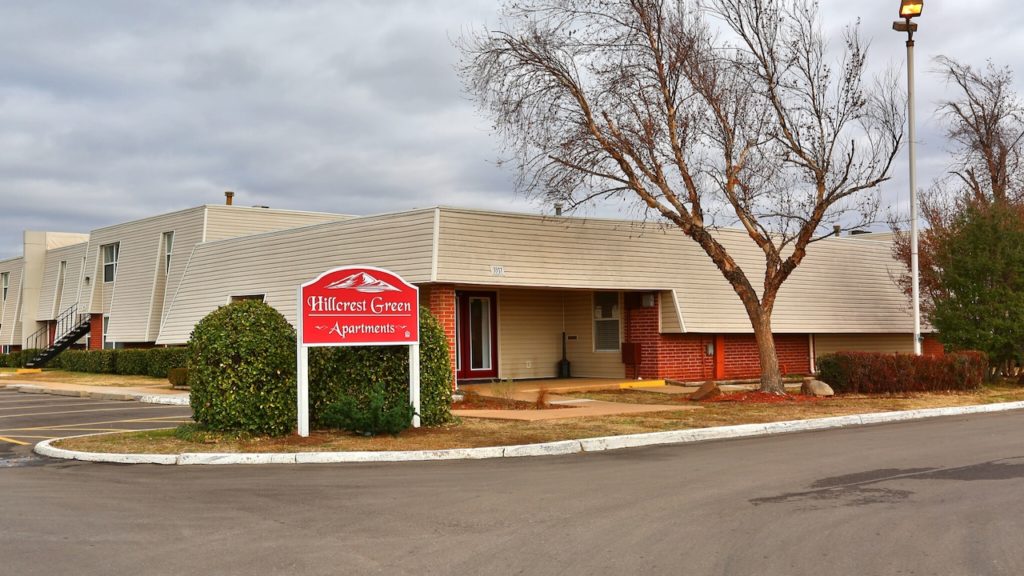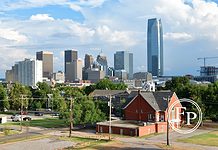Last Updated on August 7, 2021, 8:33 AM | Published: August 6, 2021
OKLAHOMA CITY (Free Press) — It would take all of a few seconds to find some politician, developer, or commentator online declaring that there has never been a more important time to invest in affordable housing.
This seems like an easily positive statement, but do we really understand what constitutes “affordable” in those cases, who enforces that definition, or who is actually benefiting more from the building and management of these low-income housing developments across OKC?
What is “Affordable?”
Affordability in low-income housing is tricky and is defined in typically convoluted legal terms.
What is considered “affordable” is determined most often by AMI, or Area Median Income, a generalized number culled from Census data that represents the annual earnings of an area’s average resident somewhere in the middle of the income bracket.
With subsidies and incentives offered according to the number of low-income units in a project, building owners and developers can apply for substantial tax credits based on even just as low as 20% of a complex’s units being made available for prices well below their city’s Median Income.
The majority of designated affordable housing units get reserved for individuals or families making 50-60% or less of the AMI.
According to data from the Department of Housing and Urban Development from 2018 (which appears to be the most recent data that is easily searchable and readily available), this is how it breaks down for OKC:
- AMI = $69,400
- 50% of the AMI = $34,700
That means that a single person applying for this kind of affordable housing in Oklahoma City could make up to $18 per hour, very nearly $11 higher than the federal minimum wage, and still even $3 higher than the $15/hr minimum that recent wage activists have been demanding.
The Federal Poverty Level designation for Oklahoma is roughly $12.5k yearly for an individual.
That means that developers offering “affordable” housing according to AMI numbers would still be legally allowed to rent to tenants making nearly three times the poverty level.
These income limits and stipulations may make a low-wage earner eligible for a variety of housing assistance programs, but the likelihood is high that they will then be facing a shockingly long wait for approval and/or housing.
Current projected wait times can range from 8-9 months for approval to up to two years before housing becomes available, due in no small part to the scarcity of affordable housing and developers willing to build it.
Who Benefits?
It should come as no surprise that building managers and developers can make far more money by constructing houses and complexes in exclusive, high-income areas and then charging rents and sale prices that would dwarf the AMIs and Poverty Levels of the state.
Why, then, would any developer bother constructing housing for low-income areas?
A number of state and federal tax incentives have been passed designed to encourage private development companies to invest in affordable housing solutions that can help to address the homeless and housing-insecure population.
To understand just a couple of these incentives, and how they can be utilized, apportioned, and even potentially exploited, let’s take a look at two recently buzzed-about developments around OKC.
Downtown OKC
As Free Press’s own Marty Peercy recently reported, the Boulevard Place development downtown has become a controversial issue among City Council members and city taxpayers alike.
The project’s developers applied for $7.2 million in taxpayer subsidies under two of OKC’s Tax Increment Financing, or TIF districts, which diverts future projected tax revenue collected in the TIFs into current development projects.
The developers stated that they would be voluntarily offering some of the building’s units as “affordable” options for low-income earners.
Now that a number of worldwide factors (not the least of which being COVID) have dramatically increased the cost of building materials and shipping, the developers are reporting that the expected rental prices for units in Boulevard Place will likely be much higher than originally expected, arguably pricing the units well out of the “affordable” range according to AMI-based standards.
This now leaves city officials to mull whether to co-fund the development with TIF funding, even though the finished complex may not have any clear benefit to the city’s low-income population.
Verifiable affordable housing
A very different scenario is playing out further south, where Indianapolis-based TWG Development has recently purchased the Hillcrest Green complex at SW 74th and I-44, located perfectly to provide a low-cost housing solution for employees of the city’s Amazon warehouse.
Rather than being directly funded or subsidized through tax reallocations like TIF, TWG plans to renovate and revitalize the complex under the Low-Income Housing Tax Credit (LIHTC,) a much more strictly overseen and regulated program that offers substantial yearly tax credits to developers that create and maintain low-income housing.
Under the conditions of the LIHTC, the building owners must provide yearly proof that their rent prices are within that 50-60% AMI range. If rents become too high, they may not only lose access to the tax credit but could be forced to pay back credits received in previous years.
“Continuing to deliver affordable housing remains our mission at TWG,” claimed Acquisitions Director Ryan Kelly in a press statement, “and we remain committed to ensuring this property remains affordable for those who need it.”
Affordable for a limited time
That statement of ensuring that the property “remains affordable” is a key part of the overall housing issue.
“All LIHTC projects must comply with the income and rent tests for 15 years or credits are recaptured,” according to the Urban-Brookings Tax Policy Center. “In addition, an extended compliance period (30 years in total) is generally imposed.”
However, the tax credit is generally only available to the owners and developers for up to 10 years after the housing becomes “active.”
Once those 10 years are up, the building owners may very well be losing money on units that they would otherwise be charging higher prices to rent out.
Even so, after the 15-30 year oversight period ends, the owners will be free to raise rents to any level they choose, potentially driving out even long-term residents that relied on the mandated affordable rates.
Likely the only way to secure permanently regulated, affordable rent is with government-owned public housing, something that OKC has, but only in undeniably small numbers. The waiting time to be approved for public housing is currently anywhere from 2 to 6 weeks. That could be out of the question for someone that needs housing now.
There are currently no Emergency Housing options in Oklahoma City.
Key Takeaways
- The term “affordable housing” is most commonly applied to housing options for earners nearer to the middle of the income bracket than to the bottom.
- The income metrics used to calculate “low-income” rental prices, most commonly percentages of the AMI, have the potential to be up to three times the state poverty level or more.
- Even under the strictest government programs, there is no guarantee that low-income housing units will remain affordable permanently, and there may be clear disincentive for developers to create affordable housing under those regulations.
- Government-owned public housing is scarce, and there is currently no option for Emergency Housing in OKC.
It is little wonder, then, why a large collection of left-leaning politicians (unsurprisingly led by Senator Bernie Sanders) are calling for a clear federal infrastructure to develop up to 10 million permanently affordable housing units nationwide, an undertaking projected to cost roughly $2.5 trillion.
Brett Fieldcamp has been covering arts, entertainment, news, housing, and culture in Oklahoma for nearly 15 years, writing for several local and state publications. He’s also a musician and songwriter and holds a certification as Specialist of Spirits from The Society of Wine Educators.











